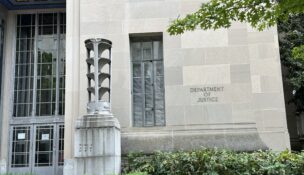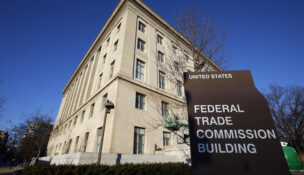Decline of the civil jury trial
By: dmc-admin//December 15, 2004//
 |
|
“We are pretending to do business as usual. … I don’t think it is business as usual.” Hon. Ann Walsh Bradley |
The percentage of civil cases, which end in a jury trial, has dropped significantly in recent years. A Wisconsin Supreme Court justice indicated the change is likely tied to the increase in alternative dispute resolution, among other factors.
Justice Ann Walsh Bradley recently told a group of lawyers that in addition to considering the reasons the court system has fewer jury trials, it is equally important to consider the consequences arising from that change.
Bradley’s comment came during the Wisconsin Academy of Trial Lawyers Winter Seminar earlier this month.
"What is the backbone of democracy, but our system of justice," Bradley said. "And core to our system of justice, of course, has been our civil jury trial."
During the past decade the number of civil cases filed in both state and federal courts has increased. The number of attorneys practicing law has increased. The amount of authoritative legal materials available has increased.
At the same time, however, the number of civil cases going to trial has not followed suit.
"It seems curious to me that contrary to the pattern of this trajectory going forward and upward, that the one thing that is central to the core of our justice system — the jury trial — is contrary to that trend," Bradley observed.
Referring to Marc Galanter’s study of civil cases in the federal court system, Bradley noted there has been a steady decline in the percentage of cases going to trial.
Galanter’s figures, based on reports from the Administrative Office of the United States Courts, show that the proportion of civil cases tried in federal courts went from 11.5 percent in 1962 to 1.8 percent in 2002.
Another study by the National Center for State Courts looked at 10 states from 1992 until 2002 and found a 44 percent decline in jury trials and a 21 percent decline in bench trials for general civil cases brought in the state court system.
"Wisconsin seems to be following this national trend," Bradley observed.
Wisconsin figures derived from CCAP show that in 1998 there were 906 civil jury trials compared with 616 in 2003.
Among the factors leading to the decline in civil jury trials is the "development and proliferation of ADR," Bradley said. Add to that is the fact that more judges are encouraging its use and that companies and government entities are embracing ADR options, and it’s not too surprising that fewer cases are going to trial.
Bradley pointed to other possible causes such as the increasing complexity of civil cases. As their complexity increases, it becomes more costly to take the cases to trial. At the same time, judicial management of cases is providing incentives for judges to encourage parties to resolve cases prior to trial.
In addition to looking for the causes of the decline, Bradley said it is important to consider the consequences.
| |
||
|
Related Links |
||
| |
||
"Whatever the causes are, I think we have to start examining and get more information about what are the consequences of the decline in jury trials," Bradley said.
First and foremost, the Supreme Court justice questioned the effect this trend has on precedent.
"My job is to write opinions developing the law in our system of justice," Bradley said. "How does it effect precedent when there are fewer and fewer civil jury trials and our precedent, instead, seems to be developed more and more on motion practice than on civil jury trials?"
She also questioned the effect on determining the value of cases. If fewer cases are litigated, there are fewer jury determinations to use as markers. The trend might also lead participants to question whether they truly received their "day in court."
Other effects to consider are the public perception of court authority, the effect on lawyers who have fewer opportunities to gain trial experience, and public education through participation in juries.
"To me, in some ways, it seems like we’re pretending it’s not happening," Bradley said "We are pretending to do business as usual. … I don’t think it is business as usual."
Tony Anderson can be reached by email.
Legal News
- Some State Bar diversity participants walk away from program
- Wisconsin court issues arrest warrant ‘in error’ for Minocqua Brewing owner
- Iranian nationals charged cyber campaign targeting U.S. Companies
- Facing mostly white juries, are Milwaukee County defendants of color truly judged by their peers?
- Chicago man sentenced to prison after being caught with ‘Trump Gun’
- FTC bans non-competes
- Gov. Evers seeks applicants for Dane County Circuit Court
- Milwaukee man charged in dismemberment death pleads not guilty
- Democratic-led states lead ban on the book ban
- UW Madison Professor: America’s child care crisis is holding back moms without college degrees
- History made in Trump New York trial opening statements
- Prosecutor won’t bring charges against Wisconsin lawmaker over fundraising scheme
WLJ People
- Power 30 Personal Injury Attorneys – Russell Nicolet
- Power 30 Personal Injury Attorneys – Benjamin Nicolet
- Power 30 Personal Injury Attorneys – Dustin T. Woehl
- Power 30 Personal Injury Attorneys – Katherine Metzger
- Power 30 Personal Injury Attorneys – Joseph Ryan
- Power 30 Personal Injury Attorneys – James M. Ryan
- Power 30 Personal Injury Attorneys – Dana Wachs
- Power 30 Personal Injury Attorneys – Mark L. Thomsen
- Power 30 Personal Injury Attorneys – Matthew Lein
- Power 30 Personal Injury Attorneys – Jeffrey A. Pitman
- Power 30 Personal Injury Attorneys – William Pemberton
- Power 30 Personal Injury Attorneys – Howard S. Sicula











